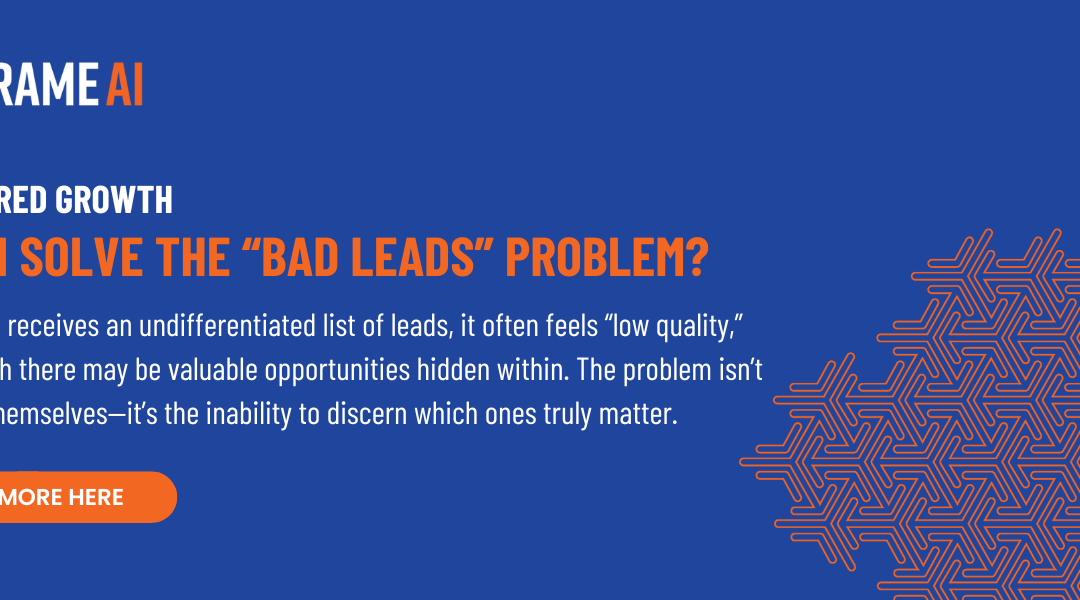If you work in technology, chances are you’ve at least heard about product-led growth.
Product-led growth (PLG to its friends) means keeping your product at the core of your customer experience. That sounds natural enough, but since products aren’t perfect, it’s also natural for customer-facing teams like Support, Success, Sales, and Marketing to fill gaps for customers. Over time, those filled gaps can grow into a list of customer needs that can only be delivered by hand. PLG is about redirecting that energy into improving your product so that customers can discover value and meet needs without asking for help. It often gets visualized as a bullseye like this one:

PLG has taken off because strong product experiences are insanely efficient at finding and retaining customers, compared to high-touch assistance. But diagrams like the one above can also raise questions that slow down adoption. If Support (and other customer-facing teams) are viewed as peripheral, how can they apply their own expertise and creativity towards product-led growth?
Until this question gets answered, Product and Support teams have trouble collaborating towards a better experience. The consequences can be unacceptable: without meaningful data from Support, Product lacks a complete view of the customer experience. And without Product leading improvements, Support will find itself solving the same problems again and again.
In this post, I share our view for how and why Support – and other customer-facing teams – can participate as essential partners in product-led growth. It starts with a change of perspective: the product-led organization isn’t a flat network – it should be a launchpad, where every customer-facing team works actively to propel the product by providing critical data to the decision-making process. To become product-led, you must also become experience-driven.

The Experience Drive
Rethinking Success and Support as parts of the Product Experience, rather than those who clean up when things don’t work as planned, requires a shift in approach. The question is not whether you need those functions – every growing product does – it’s how do you instrument their work so you can feed it back? My favorite analogy for this shift in thinking comes from the history of aviation.
For early, propeller-driven airplanes, speed was both the goal and an obstacle. Propellers work by pushing against air as it goes by, turn by fuel-burning turn of the engine. But no matter how big the engine, the returns are diminishing. This is because the faster you fly, the faster the propeller has to turn to get a piece of air that’s going by – like trying to kick your skateboard forward when you’re already going at 60mph!
Reactive customer service can feel a bit like that propeller. Filling gaps is essential, but as your company grows and connects new features with new users, Support and Success teams often either balloon in size or become points of friction themselves. Even tools designed to make support efficient, like bots and knowledge bases, become major maintenance efforts that essentially form a secondary product experience.
When the jet engine arrived in the 1930s and 40s, it turned speed into a strength. As a jet hurdles forward, its engine scoops up cold air that would be slowing it down, and compresses it into a super-heated fuel that can be ignited to explode out the back of the engine, generating thrust. The faster you go, the more efficient it gets.
To help deliver a truly experience-driven product, your support team must work like that jet engine, turning every bit of customer friction into an opportunity to improve the product experience – aka customer advocacy. They absorb varied, chaotic customer interactions, and spit out organized, meaningful data that leads to better decisions. The more feedback an experience-driven support team receives, the better data product gets – while the types of issues they encounter most dry up instead of than multiplying.

So, which mode is your team working in?
Coverage, Speed, and Ease of Action
Most Support teams we talk to have existing processes around customer advocacy: monthly meetings or “support liaisons” assigned to product teams, sometimes backed by manual tagging to keep counts on known trouble areas. But it can be hard to assess how impactful these processes are or where to improve them. As a spot-check to test just how experience-driven your customer support is, try picking 5 recent tickets at random and asking the following questions:
-
- Will the reason for this inquiry be tracked in a way that’s eventually reported to Product?
- How long would it take for this particular ticket to influence a product decision?
- What extra work would Product need to do to turn this feedback into a better decision?
These questions highlight three axes along which support teams must continuously improve the data they contribute to the product-led experience: coverage, speed, and ease of action.
Coverage means making sure that every type of customer feedback is instrumented properly so it has an opportunity to influence product priorities. This is deceptively hard because there are so many ways for customers to give feedback, and so many ways it can be discarded:

Ignoring public channels like reviews, peer communities, and social
Assuming that important feedback will come in through designated forms or buttons
Restrictive tagging and tooling, e.g. assigning tickets to one pre-defined root cause when a single case may involve several issues
Discarding older feedback because it’s too hard to contextualize with new priorities and roadmap reorganization
Low coverage is sneaky because absent data rarely raises alarms! Ignored users eventually give up, and you lose your chance to know why. And when teams do know there is missing data, it undermines data-driven decision-making.

Speed means reducing the time it takes for feedback to impact Product decisions. “Lag” can quietly devalue customer advocacy efforts:
When acute issues take a long time to fix, customers leave or invest in workarounds that may present new, more complex issues.
When Product reviews backdated feedback, it reflects an experience that has since evolved. Whether or not the problem is fixed, the old feedback is hard to use.
In spite of the above, it’s common for us to see teams relying on monthly or quarterly routines to share information between Support and Product.
Modern product development is about frequent iteration – the faster you collect and act on feedback, the more improvements you can test, and the easier it is to grow quickly and stay ahead of a competitive market. For Support to be an impactful voice in the product development process, it needs to provide information that is continuously available and up to date.
Ease of Action is the stumbling block that indirectly causes the most frustration to customer-facing teams. I’ve lost count of how many times I’ve heard quotes like this: “We are at the front lines of customer needs and put a lot of effort into capturing them. We tag and count cases, we share examples, but nothing works: Product always says they need more data to prioritize the problems we see.”

If that quote sounds familiar, the challenging truth is that the information Support is sharing may still be too hard to use. Product teams – especially those pursuing PLG – work under a mandate to use data to balance development capacity against the needs of both current and future customers. If you are sharing needs without the information necessary to assess trade-offs, then Product must do significant follow-up user research to incorporate it into their decisions. This is a major reason that customer requests often languish on backlogs.
Experience-driven teams fast-track feedback by making sure they can answer “yes” to the following questions:
Impact: do the issues you raise come with estimates about their impact on customer outcomes and effort? This is critical to prioritizing against other types of feedback.
Vision Alignment: is feedback aligned with the way Product makes investment decisions – product area, roadmap swimlane, relevant release or OKR?
Persona Alignment: is feedback aligned with who is being impacted – regions, roles, industries, account types, etc.?
Context / Examples: is it easy for Product to review specific cases or contact specific users with relevant feedback?
At their best, experience-driven teams are able to go one step further, and actively support Product in testing hypotheses about the best path forward.
Mobilizing Organic Feedback
If this is your first time reading or speaking to us, you might not know that we at Frame AI are obsessed with Organic Feedback – the feedback your customers give you when they’re not answering surveys. Organic feedback comes in two important flavors:
-
- What customers do (when they’re using your product)
- What customers say (when they’re talking about your product)

Product usage data (#1 above) forms the backbone of product-led decision making. However, your customer’s organic voice – #2 above – should also play a critical role. When you separate the signal from the noise, customer commentary can be uniquely valuable to Product decision making:
It skips the telephone game. Any product manager will tell you that there is a difference between what customers need, what they say, what a customer-facing rep hears, and what Product hears from that rep. Customer quotes don’t magically identify root causes, but when a PM can review many related verbatims they can come much closer than if they start with someone else’s digest.
It is full of insight you didn’t know to ask for. Almost every method for collecting feedback – surveys, product instrumentation, UX interviews, taxonomies for tagging cases – depends on you recognizing which themes and product interactions are worth tracking. But when customers speak freeform, they can raise issues that emerge from their experience but weren’t on your radar.
It’s validated by the effort required. Customers don’t take time to write emails, participate in support chats, or post on forums for no reason. And while there are certainly cases of spam and squeaky wheels to downweight, Product should respect that the energy spent complaining could be used re-investing in the product instead.
When mobilized by an analysis platform like Frame AI, organic feedback isn’t just unique – it can help us meet our goals of coverage, speed, and ease of action above.
Customer language is universal. If you have the capability to automatically detect sentiment indicators and important themes, you can compare them across channels including sales and success emails, support tickets, community posts, social media, survey responses, and more.
Talk (often) precedes action. Customers often talk with support and success on the way to making important decisions – whether that decision is a renewal or cancellation, or using the product in an unexpected way. Having a leading indicator that will show up later in usage, and even later in financial results, gives organic feedback from Support a leg up as a timely input to the Product process.
A sentence is worth 1000 clicks. When customer comments are packaged into relevant themes, along with all of the profile data about their accounts, and linked back into the original conversation, you have accomplished 90% of a user research task for Product. It is much, much easier to justify taking action on issues that are supported by specific comments and customer metrics.
Organic feedback can be the anchor investment that helps your team move from a reactive footing into a partnership with Product. It’s the cold air that fuels the product-led, experience-driven jet engine you’re building.
Basking in Shared Success
If your Product-Support collaboration currently falls short of the standard we’re suggesting, you’re not alone. According to McKinsey, only 15% of companies said they were fully satisfied with how their company was measuring CX — and only 6% expressed confidence that their system enabled both tactical and strategic decision-making.
Moving into a product-led, experience-driven formation requires coordinated work from all teams involved. For Support or Success, there is an act of faith in refocusing energies from operations to customer advocacy. For Product, it’s essential to engage with the data being generated by your customer-facing teams, giving feedback to keep it aligned and demonstrating the ways it influences your roadmap.
But the benefits far outweigh the costs, for each team and for the company as a whole.
For Product, organic feedback from your customer-facing teams fills in the missing data between the clicks. It can instantly shine new light on the cobwebs in your backlog, helping you to align old feature ideas with present-day issues driving effort and dissatisfaction.
And besides helping to shape product decisions, customer verbatims can be uniquely used to motivate other teams to rally around the roadmap, by making it clear how their work will influence real users.
For Support, investing in customer advocacy means an end to the demoralizing challenge of solving one case while 10 more just like it arrive. It means your reps feeling like their work is contributing to permanent solutions, not just bandaids for one customer relationship at a time. And it offers a way to play a proactive role in the economic engine of your company, rather than being pigeonholed as a necessary cost center.
And for the firm as a whole, being Product-Led and Experience-Driven means using your company’s most unique asset – the experiences of your own customers – as a fuel to iterate faster and further than your competition.
Special thanks to Stephanie Tanzar, Karen Mangia, Spencer Harwood, and TS Balaji for discussions that contributed to this post.



